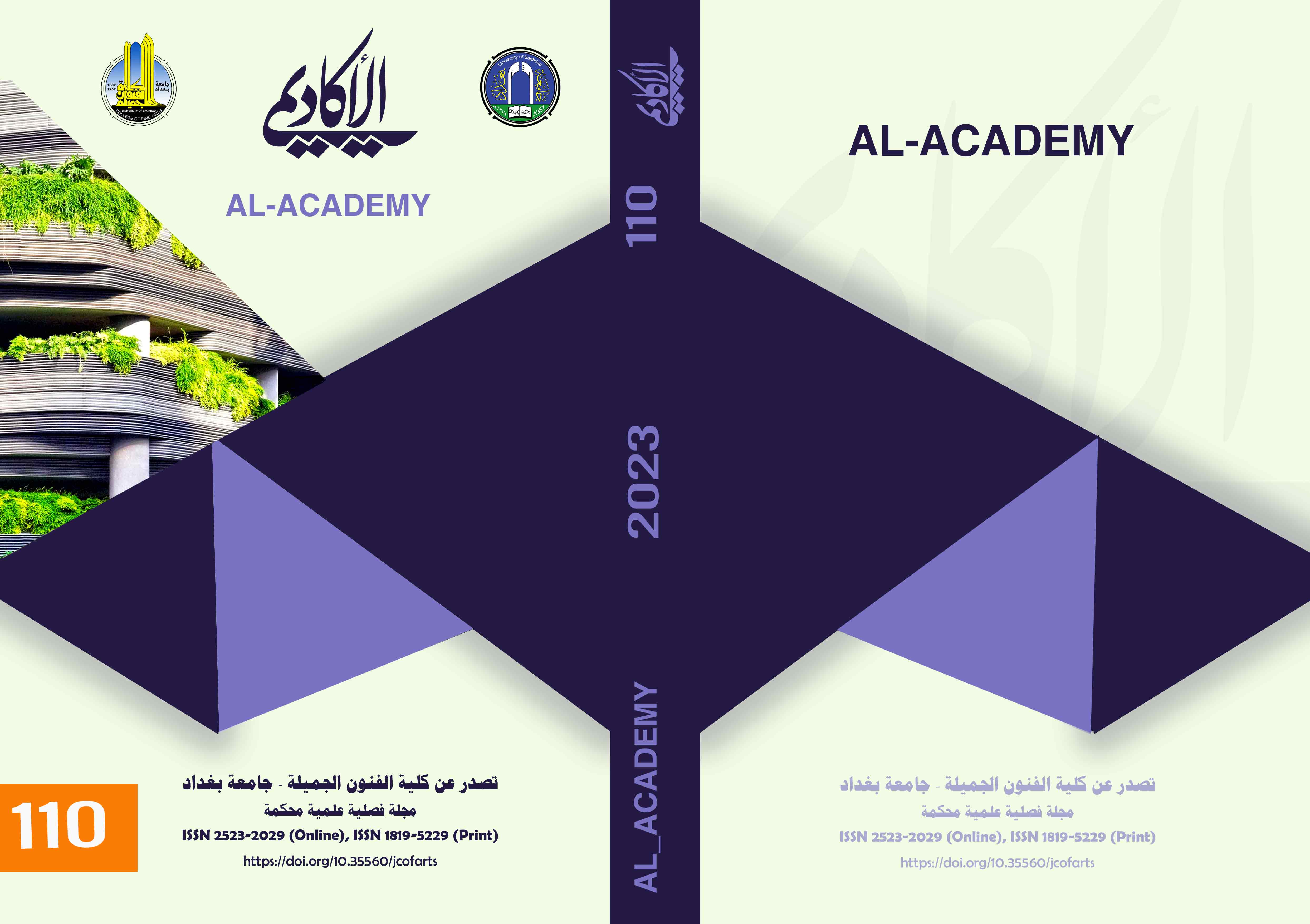Design contexts in interior space design (sewing workshops as a model)
DOI:
https://doi.org/10.35560/jcofarts1193Keywords:
contexts, design, space, interior, sewing workshopsAbstract
The topic of context is one of the important topics, which was mentioned as a concept in several fields and different fields, and there were many points of view that defined that concept.
He specified the title of the research (design contexts in the design of the interior space), as the research sought to identify the concept of context in the interior design of the spaces of sewing workshops. The research was divided into four chapters:
The first chapter, which consists of the methodological framework, the problem of research and the need for it, the importance of research, the goal and limits of research for sewing workshops for vocational schools from (2020-2021).
The second chapter: consists of previous studies and the theoretical framework of two topics:
The first topic: the concept of context in interior design.
The second topic: spaces for sewing workshops.
The third chapter: It consists of research procedures, and it is the research community. The descriptive approach was adopted in the sample analysis, which is considered one of the important research methods, in order to study phenomena, improve them, and solve problems. It diagnoses the phenomenon accurately to analyze the information and being the most appropriate with the direction of the research. At the end of the chapter, several results were produced according to the analysis form and the indicators of the theoretical framework.
The fourth chapter: includes the results, conclusions, recommendations and proposals reached from this research, the most important of which are:
1- A context is one of the main foundations for achieving meaning through simultaneous and sequential elements.
2- Poor proportionality in the scale of the space led to poor perception and assimilation of the components of the internal space
References
Jabr, F. (B.T). Introduction to Architecture. wahran: University of Science and Technology.
Abdul Ghani, N. (1961). Industrial projects, their organization and management. Baghdad: Al Maarif Press.
Al-Asadi, F. (2017). Interior Space and Conditioning Mechanisms. Baghdad: Dar Al-Fath for Printing and Publishing.
Al-Badri, A. (2009). color integration in the environment of technical and productive laboratories and workshops. Baghdad: University of Baghdad, Department of Architectural Engineering, published research, Issue (11) .
Al-Dabbagh, A. (2005). Enriching Meaning in Architecture. Baghdad: University of Technology - Department of Architectural Engineering, PhD thesis (unpublished).
Al-Gharawi, R. (2002). Protection from Machines. Baghdad: Ministry of Higher Education and Scientific Research, Technical Education Authority.
Al-Kubaisi, S. (2000). The Inspired Image in the Urban Context. Baghdad: University of Technology, Department of Architectural Engineering - Master Thesis (unpublished).
Al-Saeedi , H.-R. (2018). The Narrative Language in Interior Design. Baghdad: University of Baghdad, College of Fine Arts, unpublished doctoral thesis.
Bahnasi, A. (2003). architecture - identity - the future. Sharjah: Department of Culture and Information, Arab Center for the Arts.
Ball, V. k. (1980). Architecture and interior Design. New york: John Wiley and sons.
Ching, F.-D. (1987). interior Desgin lll ustrated. New york: Van Nostrand Reinhold Compand.
Fadl, S. (1987). The Synthetic Theory in Literary Criticism. Baghdad: Dar Al-Hurriya for Printing and Publishing.
Hassan, A. (1976). Industrial Organization and Production Management. Beirut: Arab Renaissance House for Printing and Publishing.
Ibn Manzoor, M.-F. (B.T). Lisan al-Arab. Cairo: Dar al-Ma'arif.
Karboul, H. (2014). The Impact of the Monument in the Urban Context. Baghdad: University of Technology--Department of Architectural Engineering- Master Thesis (unpublished).
Kazem, I.-L.-H. (2008). The principle of conformity in the context of architecture. Baghdad: University of Technology / Department of Architectural Engineering.
LANGER, S. (1973). Feeling and Form: A Theory of Art. London: Feeling and form.
Odeh, R. (2015). Context and Meaning in the Iraqi Theatrical Show. Baghdad: Journal of the College of Basic Education, Volume 20, Issue 86.
Downloads
Published
Issue
Section
License
Copyright (c) 2023 Makarem Salah Hassan, Faten Abbas Lafta

This work is licensed under a Creative Commons Attribution 4.0 International License.













